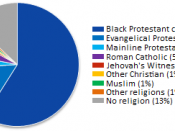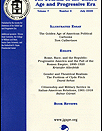The Progressive era lasted from 1900 to 1920 and renewed America's sense of protest and reform. It was a result from deterioration in conditions of urban areas. Appalled by the poverty afflicting many Americans, middle and upper class progressive groups joined together to plan certain social and economic reforms. They sought to eliminate practices harming farmers, workers, tenement dwellers, and consumers and to expand government regulation over our economy so as to further the public interest. State regulation of railroads and public utilities improved service and reduced rates because of angry, progressive politicians like Robert La Follette. Consumer protection laws assured honest weights and unadulterated foods. The economy changed, politics changed, and even society and the way that people interacted with each other changed. The power of organizing party lobbying groups was discovered, but tensions remained high and unresolved between opposing social justice groups. The Progressive Era was not seen as progressive but rather a retrogressive era, where racism flourished against African-Americans and immigrants, and foreign policy was too aggressive.
For African-Americans, progressivism largely deprived them from voting all together. Others think that this was a productive era, where equality was finally given to women. Even with this disagreement, overall the Progressive Era was a combination of both. Though racism flourished and foreign policy was overly aggressive, there was an increase in political equality and an economic boom during the Progressive Era. Although progress was made in social legislation, most blacks, urban poor, and blue-collar workers remained unaffected by the changes.


